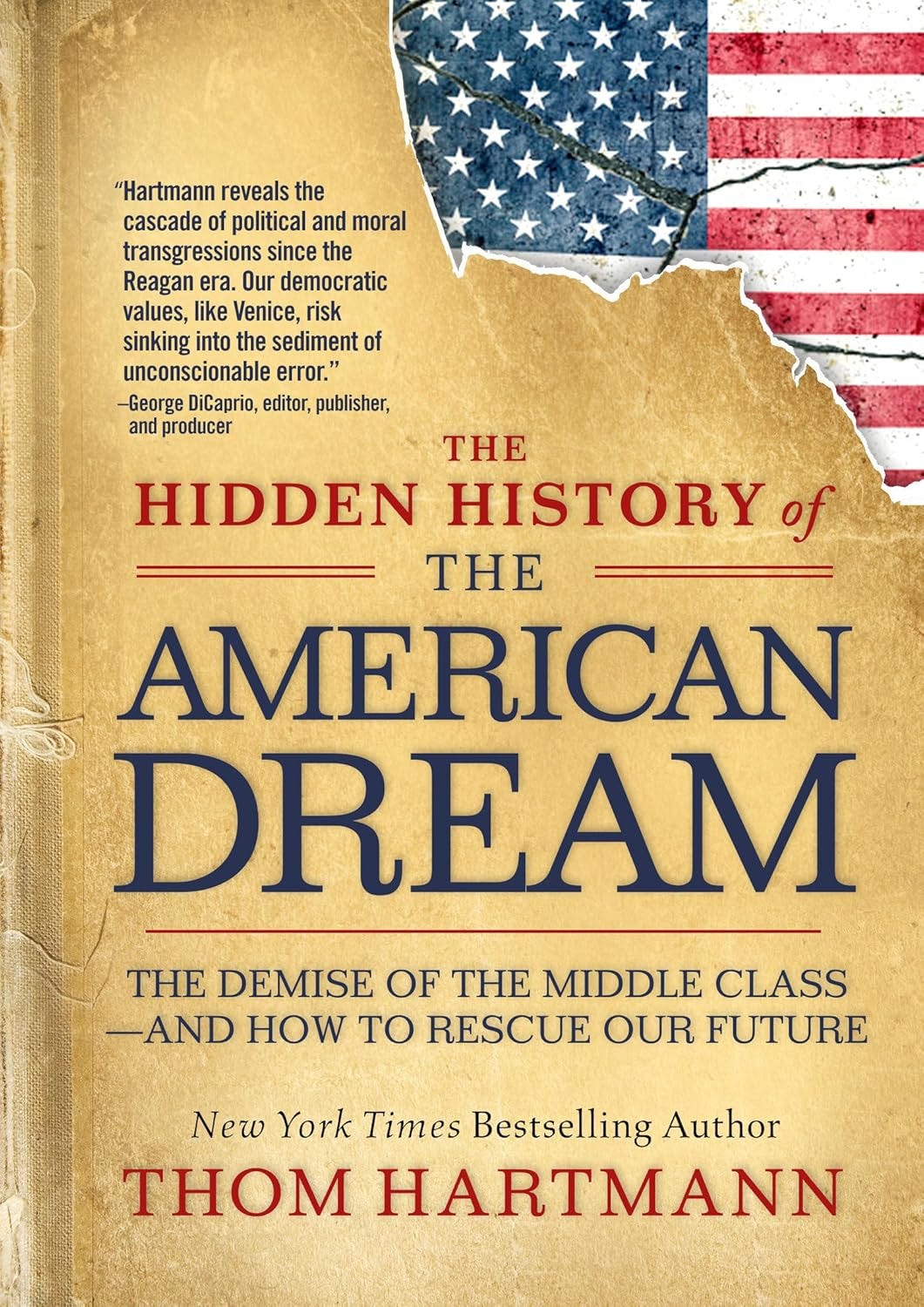Chapter 3: What it takes to build a middle class
Your weekly excerpt from one of my books. This week: "The Hidden History of the American Dream"

What it takes to build a middle class
FDR built America’s first truly large and robust middle class by passing the National Labor Relations Act (the “Wagner Act”)[xxxviii] that legalized and gave federal protection to unions and their members, while putting jobless Americans back to work with a variety of three- and four-letter federal agencies (referred to at the time as “the alphabet agencies”) that ultimately spent over $3 billion to lift over 20 million people out of unemployment and poverty.
They principally included a number of programs that Republicans mercilessly attacked as “socialism”:
— The Works Progress Administration (WPA)[xxxix] spent $11 million and put 8.5 million people to work building bridges, roads, public buildings, public parks, and airports. It was shut down in 1943, as by then most of the men it employed had been drafted for the anti-fascist (Antifa) war effort. During its existence the WPA built 650,000 miles of roads, 78,000 bridges, 125,000 buildings, and 700 miles of airport runways, reshaping the infrastructure of America and providing a launching pad for the economic vitality of the 1950-1980 era.
— The Civilian Conservation Corps (CCC)[xl] planted over 200 million trees (along with shrubs and grassland to fix soil), built national parks, and revived farmland that had been destroyed by poor agricultural practices, employing 2.5 million single young men and 8,500 young women before it ended in 1942. Its efforts, part of a larger FDR enterprise called the Great Plains Shelterbelt Project, helped reverse the effects of the Dust Bowl by planting windbreaks of trees from Texas to North Dakota. By 1941 most of America was again receiving normal levels of rainfall.
— The National Youth Administration (NYA)[xli] provided student work, employment, and skills training programs to over 4.5 million Americans between the ages of 16 and 25. In part because the program explicitly reached out to young women and African Americans, Republicans decried it as “communist” and made multiple efforts to shut it down; it ceased operations in 1943.
— The Farm Security Administration (FSA)[xlii] loaned over a billion dollars to farmers hard-hit by the Dust Bowl and set up camps across the west coast to house refugees from Oklahoma, Texas, and Arkansas whose farms had been wiped out. Its genesis was, in part, traceable to John Steinbeck’s’ novel The Grapes of Wrath about the plight of poor farmers and agricultural workers during that era.
— The Rural Electrification Administration (REA)[xliii], which still exists, took on the challenge of only 10 percent of Americans who didn’t live in cities having electricity. The program brought electricity to 98 percent of America’s farms and helped establish the nearly 900 rural electric co-ops that dot the nation today.
— The Federal Housing Administration (FHA)[xliv] is today the largest insurer of home mortgages in the world, having helped tens of millions of Americans buy homes (and nonprofits to build hospitals) since its creation in 1934.
— The Federal Emergency Works Administration (FERA)[xlv] only lasted from 1933 to 1935 and was replaced by the WPA, but in its two years it provided employment to over 20 million Americans and gave vaccinations and literacy classes to millions.
— The Civil Works Administration (CWA)[xlvi] lasted only one year (1933-1934), but in that year put over four million people to work building schools, roads, and sewers.
Other agencies didn’t directly employ large numbers of people but helped set the stage for the emergence of America’s first widespread middle class (and thus created the opportunities for them to attain “the American Dream”) by providing the necessary governmental infrastructure to stabilize business and prevent predation by the morbidly rich. They included:
— The Federal Communications Commission (FCC)[xlvii] regulated radio and eventually television and the internet.
— The Federal Deposit Insurance Corporation (FDIC)[xlviii] guaranteed bank deposits so never again would Americans lose everything when rich bankers ran off with their money and shut down the bank (as happened to millions in the banking panic of 1932-1933).
— The Securities and Exchange Commission (SEC)[xlix] was created in 1934 to regulate Wall Street and investment houses. FDR put Joe Kennedy in charge of the agency, telling my late friend Gloria Swanson that he did so “because it takes a crook to catch a crook.”
— The National Labor Relations Board (NLRB),[l] created by the Wagner Act in 1935, protects the rights of unionized workers and oversees things like union elections.
— The Social Security Administration (SSA)[li] was created with the Social Security Act in 1935. Designed as “poverty insurance,” it gives every American of all ages a comprehensive insurance policy against personal disasters. People who’ve suffered disabilities from accident, illness, or birth defects qualify and Social Security will pay for housing and care as long as needed. The program also pays a retirement benefit to the elderly.
Building on the foundation of the “administrative state” that FDR created in the 1930s, presidents of both parties have since passed sweeping social safety net programs including Unemployment Insurance, the Minimum Wage (both established by FDR’s New Deal), Medicare and Medicaid (LBJ), expanded government protections of workers and the environment, and built massive government-funded infrastructure programs including the TVA (also FDR’s), the Eisenhower Highway System, and the Hoover Dam.
Most recently, President Joe Biden’s Inflation Reduction Act hearkened back to FDR and LBJ, using tax incentives and direct investment to stimulate American manufacturing and raise the wages of US workers. So far, it’s been an overwhelming success, keeping the economy humming while reducing inflation faster than in any other developed country in the world.


